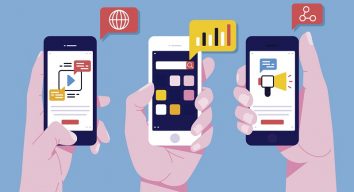At a basic level, one of your main goals when developing any type of app should be to solve a problem. Your users have a particular task that they’re trying to accomplish, but right now they don’t have a viable way to do it. At that point, you’ve got two options available to you.
The first is the most literal. You can figure out whatever the solution is, and then bring it to them in an effective way. The second option, however, is where true disruption rests – you provide them with something totally new that addresses their needs in a better way than even they themselves were aware of.
Every app that you love and use on a daily basis is successful, in part, because they chose the latter path instead of the former.
Developing Disruptive Apps: Breaking Things Download
To get an idea of this in action, look no farther than an app like Uber. If the entrepreneurs and app designers behind Uber followed that first path, they probably would have come up with a user friendly, easy-to-navigate app that would easily connect people with taxi companies whenever they needed a ride. Instead of picking up the phone and giving the company a call, they could just book a ride on their phone. That would have been a totally viable solution that addressed everyone’s needs.
But it wouldn’t have been disruptive.
What Uber did involved instead choosing to give people a far more convenient way to get from “Point A” to “Point B” using their smartphones. Those designers took a look at the problem they were being asked to solve and realized that it was far deeper than even the users were aware of. The issue wasn’t that cab companies were difficult to contact – the root problem was the way the cab industry worked to begin with.
So they developed a solution that would allow the effortless booking of a ride in seconds. One where everything – including payment – could be handled right on your phone, no cash required. One that immediately built trust among both drivers and riders because the two parties could rate each other after every interaction. This accountability was particularly important to the disruptive nature of the app, because it’s something that the taxi industry was lacking on a fundamental level. If you had a complaint after a ride, you could always call to complain to a company supervisor – but there was little else you could do.
The reason why Uber was an initial success is because they were still solving the base problem that their users were facing. The reason why it’s still a success – one powerful enough to spawn an entire new industry – is because they did so in a disruptive way, offering a more convenient solution than the one they were supposed to provide.
Yes, as an app developer you should always start with the needs of your audience. Make an effort to understand the problem they’re facing as deeply as possible so that you can come up with the right solution for exactly the right time. But you also need to take things one step further, looking for opportunities to change what users understand themselves to be capable of in the process.
When asked about the development of the internal combustion engine, Henry Ford had a very famous quote about what he was trying to do. He said “if I’d have asked people what they wanted, they would have said ‘faster horses.’” That quote is decades old, but the idea at the heart of it is as relevant as ever. Disruption is not just a good thing – it’s something you should always be chasing, no matter what.
Questions about app development and how we can help? Contact us.
Image by FreePik.com






